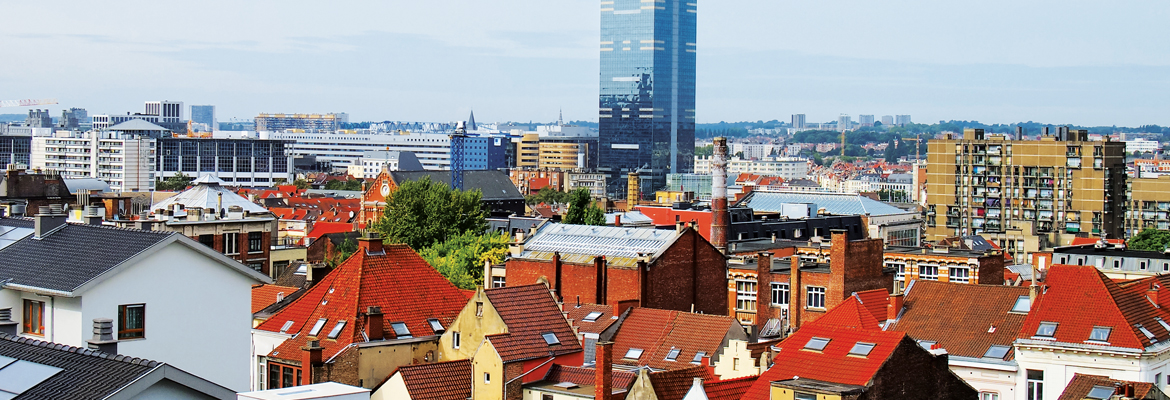This article is featured in Issue #16 (Summer 2015) of Revolve Magazine on pages 68-73, revolve.media/brussels-building-the-future
Brussels is known for making its buildings more “passive” or energy efficient. Regulations are in place to meet the highest energy saving standards for constructing new buildings or retrofitting older structures. Brussels-Capital Region also has an effective mechanism in place to train professionals in more efficient building techniques, and has created incentives for young professionals to gain real experience in making more high energy performance buildings. From the training workshops a building contest between schools to new “passive” nurseries, Brussels is moving towards a more energy efficient future.
Interview with Céline Fremault

What are the main aspects of Brussels-Capital Region’s circular economy?
“The financial, economic, social and climatic crises we are facing are opportunities for change that should be seized. We must have the audacity to completely rethink our development model. The overconsumption of goods and services is not a credible or desirable prospect. I wish to foster a development model that is more sustainable, and more humane; one in which economic growth is not an end in itself but a means for a better quality of life. Such are the priorities of the development model I wish to support with my roadmap for the circular economy.
Applied at the scale of the Brussels-Capital Region, this new model aims to direct the economy towards a rational and intelligent management of resources – ranging from raw materials to energy and including water, air and soils – by limiting externalities and developing shorter circuits of economic value chains that can benefit both our companies and our workers. This is also an opportunity for the citizens of Brussels to reconcile economy and environment without dogmatism through new ways of considering the city of tomorrow where the quality of life is ubiquitous, even for those least fortunate among us.”
How can renewables be better integrated in the energy system?
“Today, in Brussels, we have very few mechanisms to support the development of sustainable energies. I am in the process of reforming the ‘green electricity promotion’ regulation dating from 2006 and which introduced the ‘green certificates’ system. In terms of developing renewable energies, this mechanism is the most effective one the Brussels Region has at its disposal.
Practically speaking, for every electrical megawatt hour (Mwh) produced, a pre-defined number of green certificates are issued, which ensures the amortization and profitability of the installations within seven years, maximum. Guaranteeing the stability of the green certificates market remains my primary concern, given that over two thirds of the green electricity produced in Brussels benefits from the support of the certificates system.
In parallel, I have already submitted to the Government my new Air-Climate-Energy Plan, which puts forth different measures aimed at encouraging public institutions with renewable energies. When it comes to renewable energies, I intend to act as much on supply as on demand.”
What is the importance of energy efficient buildings?
“The European objectives to address climate change, to which Brussels ascribes, are extremely ambitious in matters of energy and CO2 reduction. Buildings and transportation are the only two sectors upon which Brussels can act to meet these objectives. Renovating our existing infrastructure is thus a capital dimension, one in which we must put all of our necessary energy, otherwise there is a risk that the European objective will not be reached in Brussels. This is why any new or assimilated building in Brussels must now meet the PEB 2015 (quasi-passive) norm.
Within this framework, it is now essential to take into account the energy performance and its impacts, as well as the quality and durability of the materials used, plus the building’s life cycle, which must correspond to the needs of the city’s different functions. Buildings are our primary living spaces: a house, an office, a nursery or school for our children. This is why we must guarantee the best possible quality in terms of energy performance, management of energy flows, or acoustic insulation.”
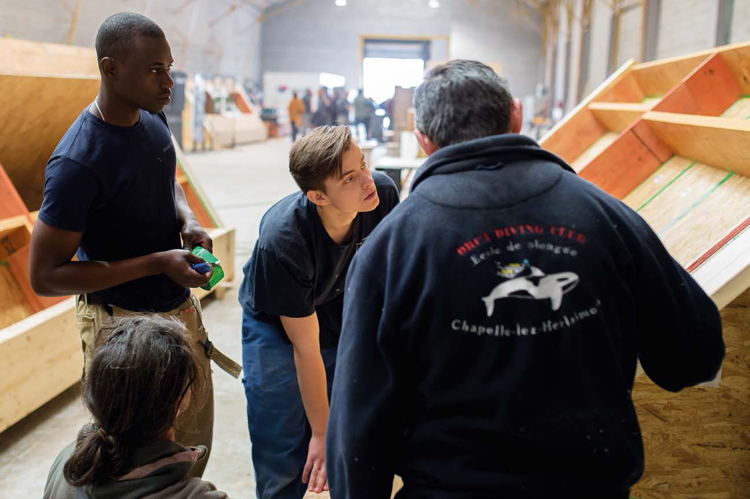 |
|
The CDR construction workshop in Anderlecht provides training in passive building techniques such as insulation and air tightness
|
How to communicate better with citizens?
“There is a certain paradox we can see today: more and more citizen initiatives are being developed while a large majority of the population still gives too little attention to environmental and climate questions. Since July 2014, I chose to meet the challenge of bringing citizens and companies closer to environmental issues. Since then, I have had the opportunity of talking with committed people, who give their time, who engage and search together in order to transform their living conditions towards more sustainable and durable forms that respect our environment. Working on projects together with other citizens creates connections and a dynamic that gives an impetus to collective action, which allows us to go further, to get behind the same objective together.”
What are some concrete examples of sustainable projects in the Brussels-Capital Region?
“1. The sustainable building week – a plan that will allow participating schools to both conceive and complete a passive construction project that corresponds to sustainable building criteria.
2. The passive sustainable building contest with schools – 47 students and 18 teachers from eight technical and vocational secondary schools worked with La Cambre-Horta (ULB) architecture students on a sustainable, passive and modular building project that is transportable.
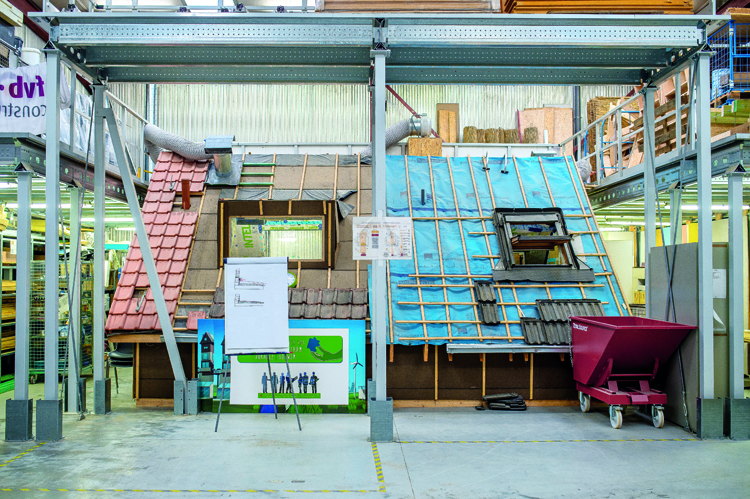 |
|
The Passive Sustainable Building Contest offers students the opportunity to gain real work experience (www.cdr-brc.be)
|
3. The training platform of the Confédération Construction Bruxelles-Capitale (CCB-C) – a platform set up to analyze companies’ training needs for their employees as well as to develop relevant training modules and to facilitate financial help.
www.confederationconstruction.be
4. Brussels Retrofit XL – a platform aimed at sharing technology from research centers to companies in Brussels. It comprises 11 research projects with 13 teams from Brussels universities and research centers.
5. Opalis – a website addressed to contractors and architects who wish to buy or sell reusable materials.
6. Baticréa – a specialized cooperative for all professions linked to the building sector.
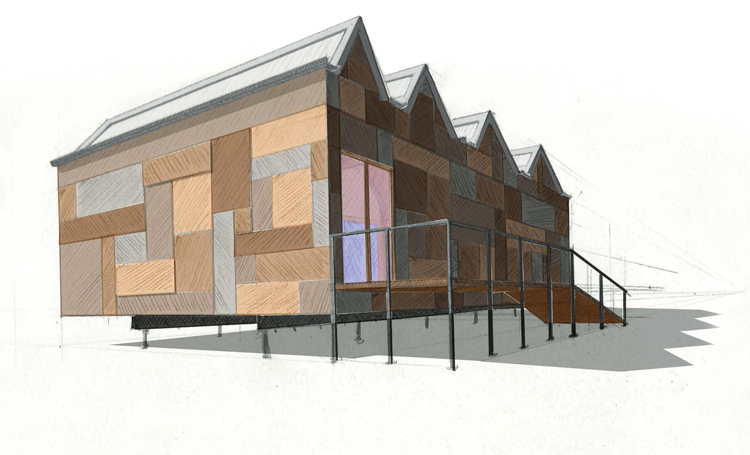 |
|
A pilot project drawing by Reginald van Oldeneel for the Passive Sustainable Building Contest
|
Towards a Circular Economy
Among the concrete examples cited by Minister Céline Fremault to support sustainable construction in Brussels, there are numerous activities put in place within the “Alliance Emploi-Environnement” (Environment-Employment Alliance).
Launched in 2010 by the Government of Brussels-Capital Region, the Environment-Employment Alliance is an innovative and inclusive approach that aims to make the act of improving the environment an actual source of economic opportunity and of job creation for the inhabitants of Brussels. The project goes beyond classic consultation and participation by closely associating all the stakeholders to work together in developing green sectors and sustainable jobs.
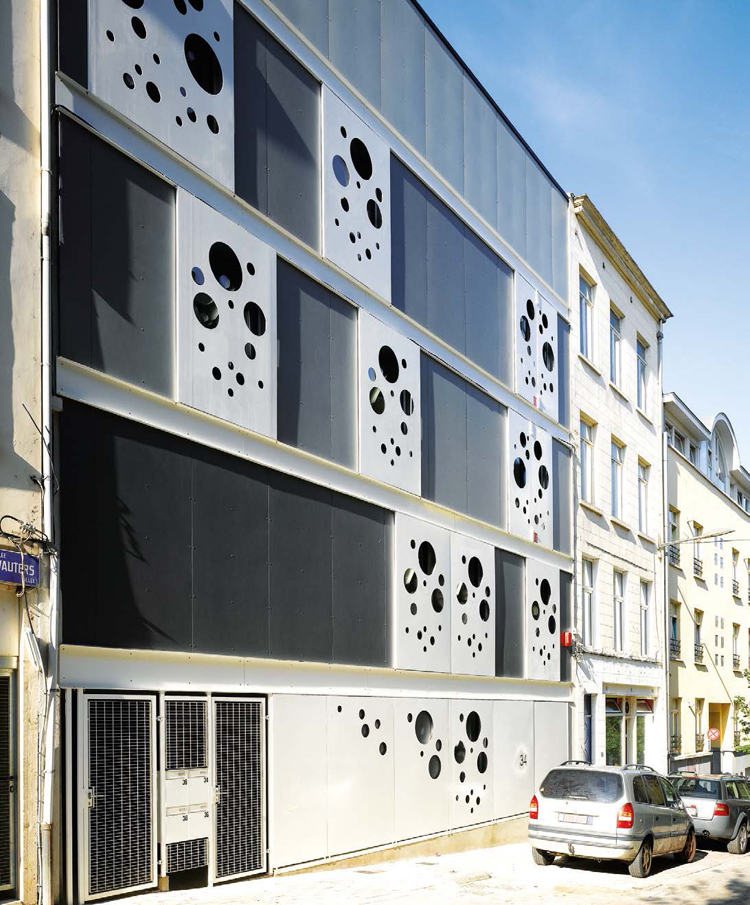 |
|
Saint-Francois nursery
|
In Brussels, the building sector represents 25,000 salaried and independent jobs (2011 numbers) and accounts for 70% of the green-house gas emissions, thus constituting the greatest opportunity for energy savings. Through the 64 concrete actions planned in the Alliance, the Brussels-Capital Region pledged to help the building sector respond to the growing sustainable construction market.
After four years of implementation, the Alliance’s first axis (sustainable construction) has generated real and significant effects in the sector. As of now, public and private operators recognize one another: several solid partnerships have been established around concrete projects, each being aware of the challenges of sustainable building as well as the companies’ and sector’s needs. This type of networking generates real value.
Also very interesting is “Passive Sustainable Building Contest”, run by Brussels Environment in collaboration with the Brussels Reference Center for the Construction Center (CDR/BRC) (see box).
Considering the challenges in Brussels, identified in the new Declaration of the Regional Policy (2014), including the improvement of the quality of life and economic development, job creation, training and education, the objectives of the Environment-Employment Alliance remain primordial today. The future Regional Roadmap for the Circular Economy will bring a clear vision to orient the process of co-development inherent in the Environment-Employment Alliance.
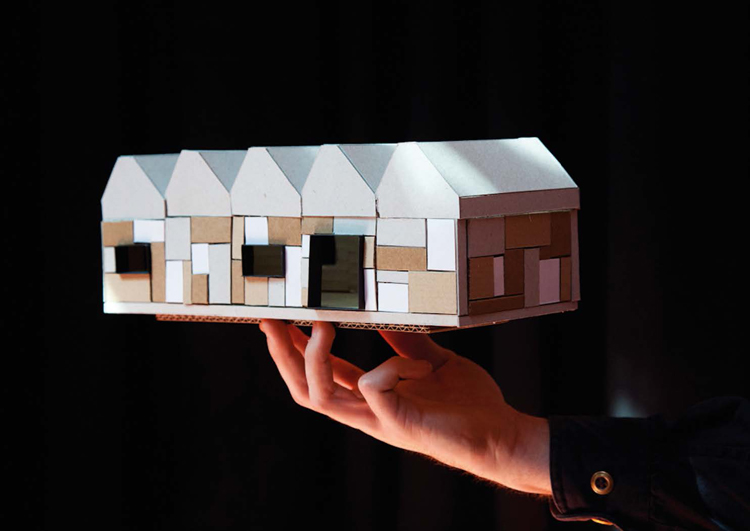 |
|
Maquette presented to the jury of Phase I in June 2014
|
The opportunity exists to reformulate economic development to be more equal and properous for human development, to improve the quality of life in Brussels (for citizens and the city alike) and thus respond to the main environmental and societal challenges confronting urbanization today. The Brussels Government chose to seize this opportunity by pursuing the Circular Economy.
The Circular Economy was the central theme of an international symposium in Brussels at the end of May 2015; this economy aims to highlight the preservation of resources and to diminish the impact of respective sectors on the environment while creating economic opportunities. From now on, the Environment-Employment Alliance will pursue this path in Brussels. As this roadmap is one of the commitments of the 2025 Strategy, it will bring better coordination and coherence to the actions of the other policies in Brussels-Capital Region.
“Passive” Nurseries: Exemplary Buildings for Future Generations
The Brussels “demographic shock” entails major implications regarding educational, cultural, sports and other civil amenities. The Brussels Statistics institute expects an additional 32,500 pupils by 2020 and estimates a need for 79 new schools by 2015. This is quite a challenge.
The Brussels-Capital Region’s call for projects “Exemplary Buildings” (Batex) has encouraged new schools and nurseries to be built as energy-efficiently as possible. In 2011, a thirteenth nursery adopted the “passive” building standard in Brussels; most nurseries applying these standards use renewable energy sources via solar thermal collectors.
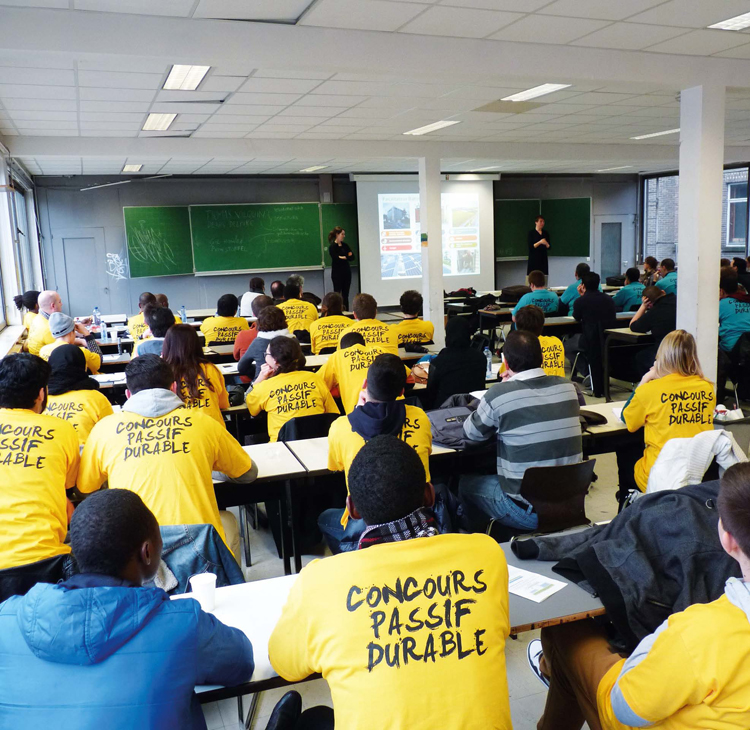 |
|
First meeting between the conceivers and the builders of the projects in february 2014
|
Resulting from competition organized as part of the Méridien Quarter Contracts, the Rue Saint-François nursery, located in Saint-Josse-ten-Noode, has 30 beds and three apartments, and was designed by O2 Architects. The architects opted for a concrete structure, which gives rigidity and inertia, which is complemented with wooden frame walls assembled and insulated on site.
Airtightness was achieved to neutralize air leakage between the flats (without any thermal consequences), the flats were tested simultaneously by a blower door. The nursery requires 13 kWh/m2 per year and the flats between 6 and 12 kWh/m2.
The Passive Sustainable Building Contest
Interview with Julien Holef, Project Manager of the “Passive Sustainable Building Contest” for CDR/BRC.
“The Passive Sustainable Building Contest was carried out in association with the Employment-Environment Alliance and really took shape in September 2013. The aim is to allow students from Brussels building schools to try their hand at completing a real-life building that will be used as a training room.”
Beyond the fact that it is a sustainable building that can be taken apart and transported, the specificity of this competition lies in the variety of people taking part, and in the possibility for the participants to understand and take into account the particular challenges construction trades faces.
“Following the project from beginning to end, seeing people who take pleasure in building this pilot building and sharing their enthusiasm, that’s what I am most passionate about,” says Julien. “The schools’ engagement was total, from the students but also from the teachers and the administration.
“It’s a project that one can’t carry alone and it’s thanks to everyone’s participation that we will achieve something that the students can be proud of.”
The participants included 47 students, future building professionals from eight schools in Brussels, and future drawers and architecture students. Combined into two multidisciplinary teams, they each presented their best possible building project.
In February 2015, the participants started building the pavilion in the workshop, then the roofing was completed as well as the module’s partitions. The next big step will be the assembly of the different elements. In June 2015 the project has finished. The passive module will then be taken apart, transported and reassembled at another site to serve as a training space.


